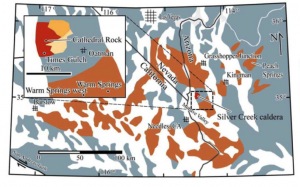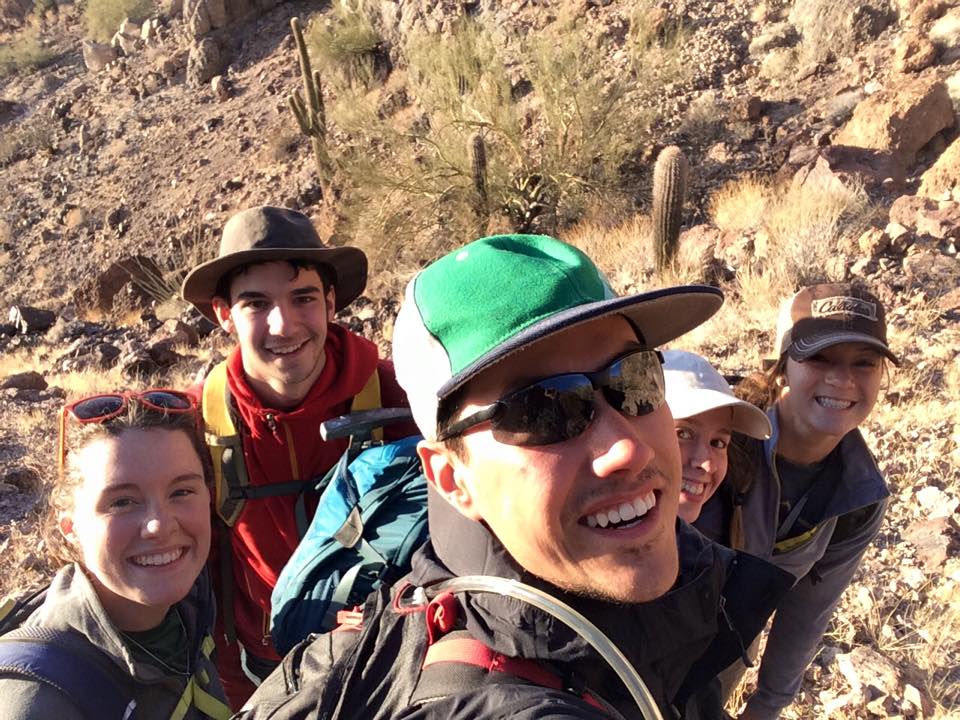Research Overview
 Magmatic Processes at Mount St. Helens Volcano
Magmatic Processes at Mount St. Helens Volcano
Zoned zircons record the time-temperature-composition history of the magma in which they grew. Recent development of trace element analysis techniques using SHRIMP-RG (Mazdab and Wooden, 2006), combined with in situ U-Pb and U-series geochronology and the new Ti-in-zircon thermometer (Watson et al., 2006), provides a powerful tool for extracting this information. We have used this approach to delineate the complex history of the Spirit Mountain batholith in southern Nevada, including repeated episodes of crystallization, melt evolution, differentiation, recharge, and transport of magma between storage zones in the shallow, Miocene intrusive system (Claiborne, et al., 2006; Walker et al., 2007). Zircons from individual samples, and even single zircon grains, record temperature variations of up to 100°C and order-of-magnitude variations in trace element concentration. Unfortunately, the timescales of closely-spaced events recorded by zoning are beyond resolution of in situ (SHRIMP) U-Pb geochronology (>105 years for Miocene zircons). By applying these methods to zircons erupted from very young volcanic systems, including U-series geochronology with its much higher age resolution (~104 years), we anticipate better constraining the timescales of pre-eruptive magmatic processes such as rejuvenation and differentiation, and providing insight concerning the connections between volcanic and plutonic systems.
We are now also examining glasses and feldspars from throughout the history of the volcano to better understand the dynamics of magma storage and evolution in the Mount St. Helens magmatic system.
Zircon as a Record of Magmatic Processes
The accessory mineral zircon is commonly used to investigate magmatic systems. I am interested in using this powerful tool, but also in better understanding its crystallization and subsequent behavior so that we can better interpret its records. This includes, especially, how we use its trace element geochemistry to understand the compositions and temperatures of the melts from which it grew.
Pre- and Post-supereruption Magmatism (the Peach Spring Tuff)
Our REU program has recently ended. We thank you for your interest, and hope you’ll keep an eye out for papers coming out soon!

Supereruptions are explosive events that eject more than 1000 cubic kilometers of volcanic material – capture our imagination and compel us to consider the potential effects of one of Earth’s rarest yet deadliest acts. Comprehending what led to supereruptions in the past is essential to understanding and predicting similar events in places where geologically recent supereruptive activity suggests a threat, including the U.S. (e.g. Yellowstone), South America (southern Andes), Indonesia, and New Zealand.
This work will investigate the tumultuous magmatic history recorded by the 18- to19-million-year-old volcanic and intrusive igneous rocks in the southern Black Mountains of northwestern Arizona and elsewhere in adjacent California and Nevada. Here, the geologic record includes the well-exposed, recently-identified Silver Creek caldera, which produced the enormous Peach Spring Tuff (PST) supereruption nearly 19 million years ago. The PST is exposed over 32,000 km2 of western Arizona, southeastern California, and southern Nevada.
Moreover, the Silver Creek caldera and its immediate environs also offers a stellar record of the PST’s immediate magmatic precursors and successors, meaning that we can evaluate the long-term evolution of this volcanic center in order to gain a better understanding of how and why supereruptions are generated – topics that scientists are actively investigating, and to which the geologic record in the southern Black Mountains may provide valuable clues.
We aim to answer the following supereruption-related questions:
- How does supereruptive magmatism compare to typical-scale magmatism (e.g. Mount St. Helens in 1980), and how are these connected?
- What does a supervolcano look like before it erupts?
- How and why do large magmatic systems change through time?
ve


Connect with Vanderbilt
©2024 Vanderbilt University ·
Site Development: University Web Communications